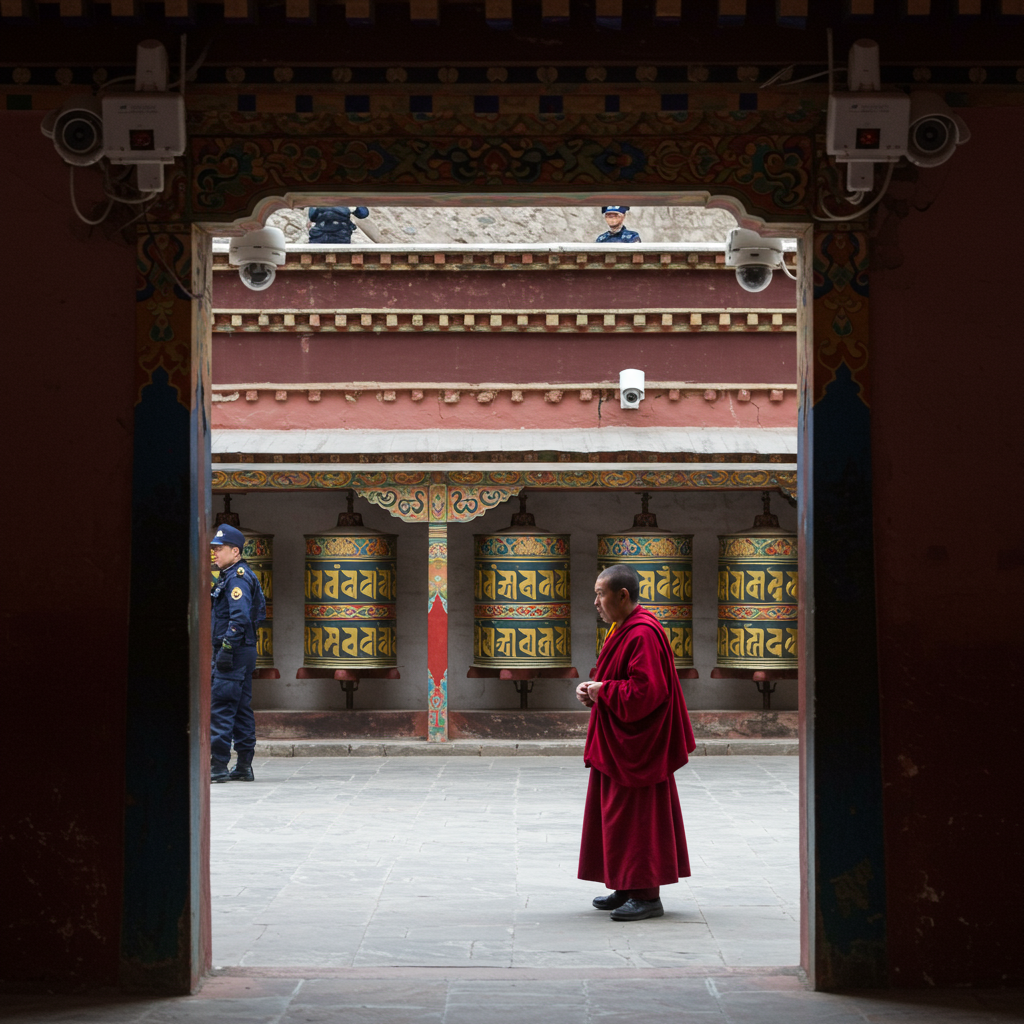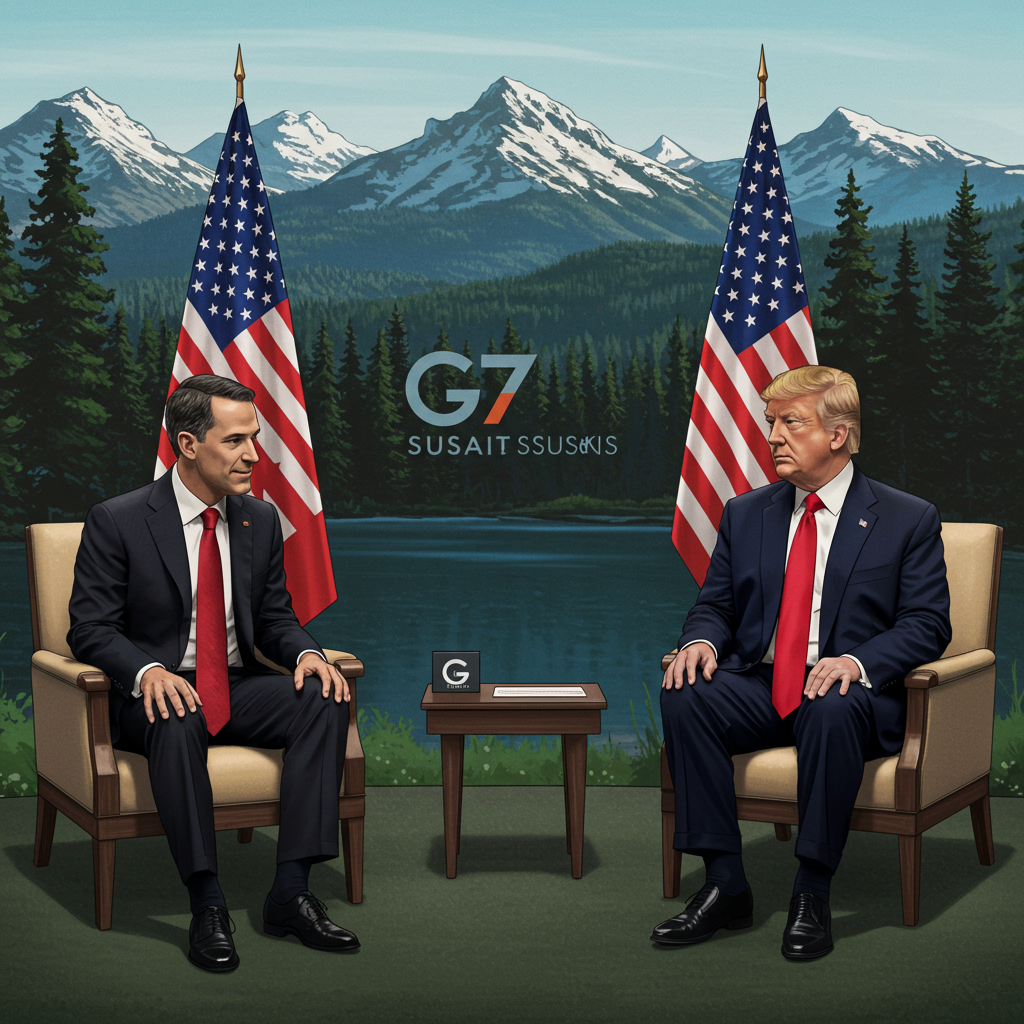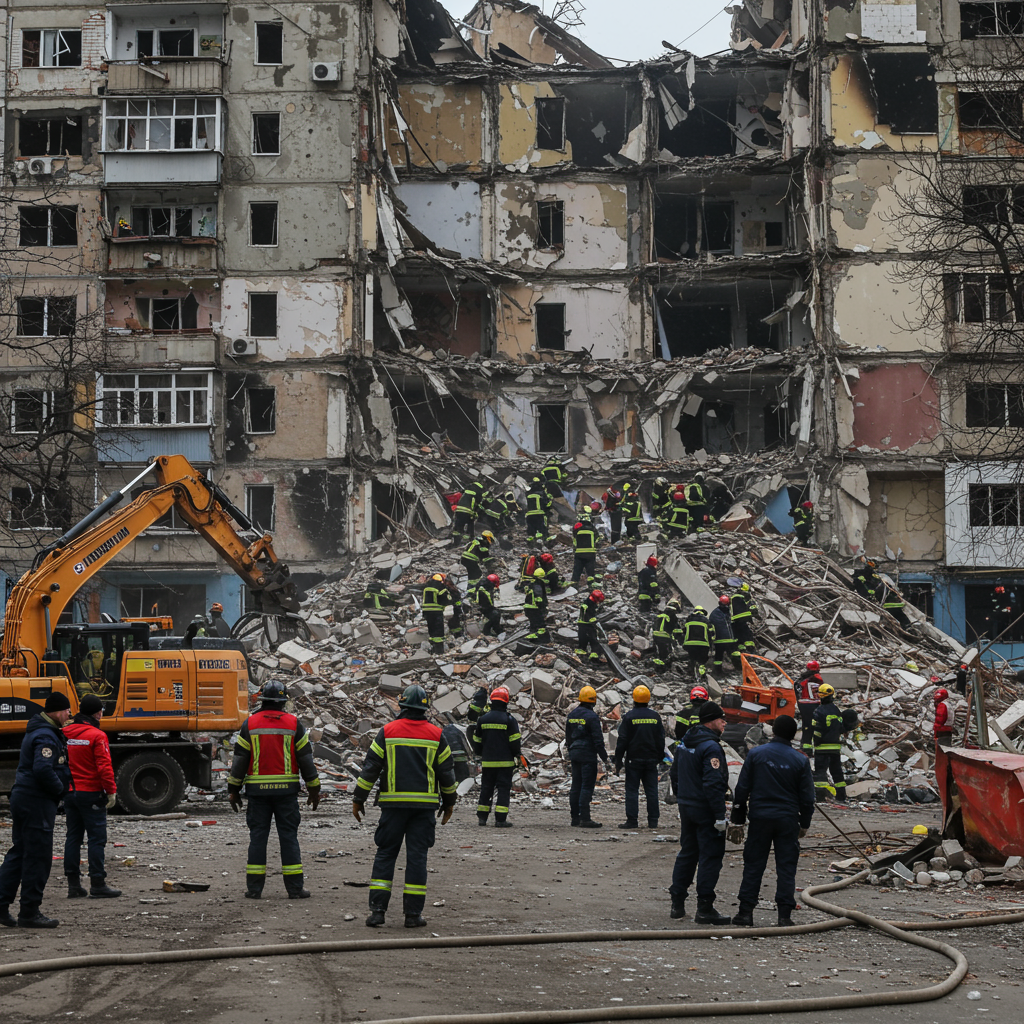Deep within China’s Sichuan province, in the <a href="https://news.quantosei.com/2025/07/03/be-careful-they-are-watching-you-tibet-is-silent-as-dalai-lama-turns-90/” title=”Silent Tibet: China's Crackdown as Dalai Lama Turns 90″>tibetan town of Aba, a quiet struggle unfolds. This region, considered the heart of Tibetan resistance, offers a rare glimpse into life under pervasive state control. Visiting the historic Kirti monastery reveals a landscape marked by surveillance cameras and uniformed presence, a stark contrast to the rhythmic chanting and ancient prayer wheels inside. Here, where even a brief conversation with a monk carries significant risk, the true cost of cultural and religious suppression becomes clear. As the Dalai Lama nears a milestone birthday, the global spotlight intensifies on Tibet’s uncertain future and Beijing’s determination to control it, including the critical question of succession.
Life Under Constant Watch
The monk’s warning is immediate and hushed: “They are watching you.” Eight unidentified men follow the BBC team, a constant reminder of the state’s omnipresence. Speaking out risks severe trouble, yet some dare to share their reality. “Things here are not good for us,” a monk states quietly, lamenting the lack of basic human rights and describing the government’s actions as lacking a “good heart.” This sentiment echoes through the town, where resistance simmers beneath a heavily policed surface.
Aba, known as Ngaba in Tibetan, sits outside the official Tibet Autonomous Region (TAR). Millions of tibetans live in such areas, viewing them as part of their historical homeland. The Kirti monastery has long been a flashpoint. In the late 2000s, it gained international attention as Tibetans there undertook self-immolations in protest against Chinese rule. Nearly two decades later, Beijing’s anxiety persists. A police station now stands inside the monastery’s main entrance. Surveillance cameras mounted on steel poles monitor every corner, leaving little room for private expression or assembly.
A History of Defiance and Suppression
Aba played a critical role in the wider Tibet uprising of 2008. Protests reportedly ignited after a monk displayed a photo of the Dalai Lama inside Kirti monastery. Escalating into riots, the situation resulted in Chinese troops opening fire, leading to numerous Tibetan deaths. Beijing claimed 22 fatalities across Tibet, while Tibetan groups in exile reported closer to 200.
In the years that followed, over 150 self-immolations occurred, many concentrated in or around Aba, tragically earning the main street the name ‘Martyr’s row’. This extreme form of protest, often calling for the return of the Dalai Lama, highlighted the depth of despair and resistance. China responded with a severe crackdown. Information from inside Tibetan areas is now incredibly difficult to obtain, largely filtered through state channels or accounts from those who have fled abroad or are associated with the government-in-exile in India.
Beijing’s Development and Control Strategy
China has invested heavily in Tibetan regions, building modern roads and railways. This infrastructure boosts tourism and integrates the areas economically with the rest of the country. However, Tibetans who have escaped the region report that this development comes at a cost. Increased troops and officials arrive alongside new roads, systematically eroding faith and freedoms.
Beijing officially considers Tibet an inseparable part of China. It labels the Dalai Lama, Tibet’s revered spiritual leader living in exile since 1959, a dangerous separatist. Public displays of his image or any form of support can lead to imprisonment. This tight control extends to nearly every aspect of life, particularly cultural and religious expression.
Eroding Identity Through Education
Human rights groups allege countless Tibetans have been detained simply for peaceful protest or promoting their language. A major area of concern is the education system. New laws mandate that all children under 18 must attend Chinese state-run schools and learn Mandarin. They are barred from studying Buddhist scriptures in monasteries until reaching adulthood at 18. Even then, they must profess “love for the country and the religion and follow national laws.”
This represents a massive shift for a community where monasteries traditionally served as educational hubs for boys, often from a young age. A monk in Aba recounted the recent demolition of a nearby Buddhist preaching school by authorities, highlighting the direct impact of these policies on traditional learning institutions.
According to renowned scholar Robert Barnett, these regulations could have a “profound effect” on the future of Tibetan Buddhism. He suggests these changes are pushing towards a scenario of “complete management of intellectual input” under President Xi Jinping. Education, Barnett notes, will increasingly focus on Chinese festivals, virtues, and culture, severely limiting the transmission of traditional Tibetan knowledge and values.
Two Worlds, One Sky
The journey to Aba itself illustrates the contrasting realities. The road winds through stunning mountain landscapes before reaching the high-altitude plateau. Golden-roofed temples dot the horizon, catching the sharp sunlight. Yak herders on horseback navigate ancient paths. Yet, this traditional scene is juxtaposed with the omnipresent signs of Party control and economic integration.
Roadsides feature slogans proclaiming unity among ethnic groups. New hotels, cafes, and restaurants cater to increasing numbers of Chinese tourists. These visitors often appear amazed by the daily religious practices of locals, sometimes questioning the time spent spinning prayer wheels or prostrating. Despite the surface appearance of cultural exposure, the underlying control is undeniable. Hotel check-ins require facial recognition. Buying petrol demands multiple IDs and high-definition camera scans. Information access is severely restricted. Barnett describes Tibetans as “locked off from the outside world.”
The Looming Succession Conflict
The question of Tibet’s future has gained urgency with the Dalai Lama turning 90. From Dharamshala, India, where hundreds gathered to celebrate, he recently addressed the long-anticipated issue of his succession. Reaffirming previous statements, he declared that his successor would be chosen after his death by the Gaden Phodrang Trust, his office. Crucially, he stated “no-one else has any authority to interfere in this matter” and that the successor must be born outside China.
This sets the stage for a direct confrontation with Beijing. China insists the reincarnation process must follow religious rituals and “national laws and regulations,” requiring Communist Party approval. Within Tibet, discussion of the Dalai Lama and his statements is forbidden, making the local reaction largely unknown.
Beijing is actively preparing its strategy. Barnett notes a “huge propaganda apparatus” is already deployed, with Party teams visiting communities to teach about the “new regulations” for choosing a Dalai Lama. The precedent is concerning: following the death of the Panchen Lama (the second highest authority) in 1989, the Dalai Lama’s chosen successor disappeared, and Beijing approved a different candidate, unrecognized by Tibetans outside China. A similar scenario could see two competing Dalai Lamas, forcing the world – and more importantly, Tibetans inside China – to choose whom to recognize.
Barnett warns that Beijing’s goal is to dilute Tibetan culture, to “turn the lion of Tibetan culture into a poodle.” The Party seeks to replace potentially “risky” elements with patriotism, loyalty, and fealty, promoting a sanitized, “Disney version” of Tibetan heritage focusing on singing and dancing while suppressing its spiritual and political depth. The extent to which authentic Tibetan identity will survive this pressure remains uncertain.
Perseverance in the Face of Pressure
Despite intense state control and the ongoing efforts to reshape their society, Tibetans continue to practice their faith and maintain their identity. As the BBC team left Kirti monastery, women carrying tools for work paused to spin prayer wheels, singing in Tibetan. Their quiet perseverance, visible in their expressions and actions, speaks volumes.
For 75 years, Tibetans have fought, and many have died, to preserve their culture and beliefs. The challenge ahead is immense: protecting this identity and way of life, particularly as the era of the current Dalai Lama draws to a close and the fight for his succession intensifies between traditional authority and state control.
Frequently Asked Questions
Why is surveillance so intense in Tibetan areas like Aba?
Surveillance is pervasive in Tibetan areas because Beijing views Tibetan identity, particularly its strong links to Buddhism and the exiled Dalai Lama, as a potential threat to its authority and control. Places like Kirti monastery, with a history of resistance, are monitored through cameras and visible police presence to suppress dissent, prevent communication with the outside world, and ensure compliance with state regulations.
How are China’s education policies affecting Tibetan culture and religion?
New policies mandate that children under 18 attend state schools and learn Mandarin, prohibiting monastery-based religious study until adulthood. This aims to integrate Tibetan youth into mainstream Chinese culture, emphasizing patriotism and Party loyalty over traditional Tibetan language, history, and religious learning. Experts believe these policies could profoundly erode Tibetan Buddhism and culture by controlling “intellectual input” from a young age.
What happens next in the conflict over the Dalai Lama’s successor?
The Dalai Lama has stated his successor will be chosen by his office after his death, likely from outside China, without external interference. However, Beijing insists it must approve the selection according to Chinese laws and religious custom. This sets up a potential scenario with two rival Dalai Lamas. Beijing is conducting propaganda campaigns to promote its eventual candidate, aiming for recognition within China, though Tibetans and the international community may not accept a state-appointed figure.




